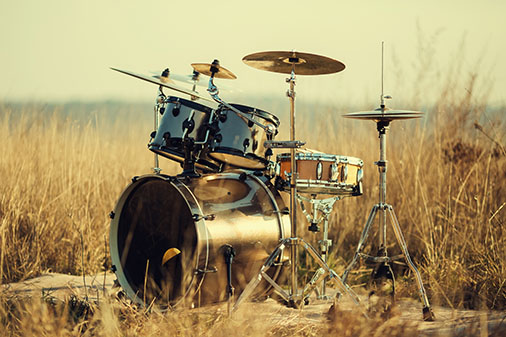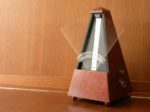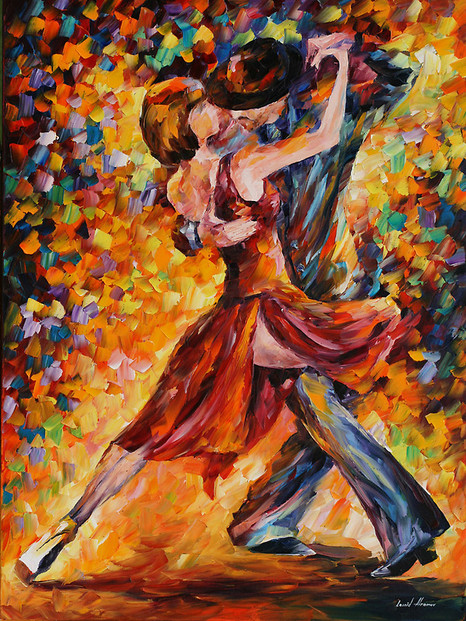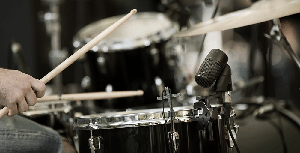One of the most exciting and rewarding instruments in any band’s lineup is the drum set.
Why?
The drummer is the most active person onstage!
The drummer is also one of the most versatile—you can see drummers playing their acoustic drums in rock bands, jazz orchestras and even cutting-edge electronic music.
What is it that makes the acoustic drum set such an adaptable instrument? Let’s look at how it works:
Parts Of an Acoustic Drum Set
Although the drums may seem like simple instruments, the number of different drum parts (typically called “elements” by professionals) will quickly make even the smallest set look like the most complex thing onstage.
Drummers often modify and customize their sets by adding different elements, but almost every modern set of acoustic drums includes the same parts. Let's break it down:
- Bass Drum—The largest element of most drum sets is the bass drum, also known as a kick drum. It sits sideways on the floor, with one side facing outward. The drummer uses a foot pedal to hit the inward face of the drum, producing a loud, low-pitched sound that anchors the rest of the band.
- Snare Drum—The snare drum is different from all the other drums because it has a row of metal springs stretching across its bottom face. Those metal springs are called the snare, and when a drummer hits the snare drumm, they vibrate against the drumhead, producing a bright, high pitched sound. This drum is typically placed between the drummer’s knees, directly in front.
- Toms—The toms are typically located in front of the drummer, just past the snare drum. Toms come in a wide array of sizes and feature two simple drum faces, one on the top and the other on the bottom. These drum set elements make a thick, hollow sound that gets deeper as the drum gets bigger. Most drum sets have either one or two toms attached to the top of the bass drum.
- Floor Tom—The floor tom is shaped like the other toms, but it is larger. It stands on the floor, facing upwards, and makes a sound that is deeper than the two other toms, but not as deep as the bass drum. Most drum sets have only one floor tom, located by the drummer’s dominant hand.
- Hi-Hat Cymbal—This drum set element looks like two wide, flat brass plates sitting atop of another. The hi-hat is made up of two cymbals that are connected to one another through a mechanism that lets the drummer open and close them with a foot pedal. When closed, the hi-hat makes a biting high-pitch sound that is quickly muffled silent. When open, the hi-hat rings out, making a sound that lasts longer.
- Crash Cymbal—Most drum sets have at least one or two crash cymbals. Crash cymbals usually have thin edges that help them make a loud, explosive “crash” sound. Because they are loud, these cymbals are usually used for accenting important parts of a musical phrase. Some drummers, particularly rock drummers, like to collect lots of different crash cymbals
- Ride Cymbal—Typically located above the floor tom, the ride cymbal is usually larger and thicker than the crash cymbal. This cymbal makes a sustained, shimmering sound that complements other instruments without overpowering them. Rather than putting accents on musical phrases, it is designed to be played in a steady, rhythmic way.
There are lots of other elements that can be included on a modern drumset. However, these are the basic elements that you’re likely to see on every set.
A drum set isn’t always made up of just those elements, though. Many of the elements attach to hardware that keeps them standing upright. Take a look:
Usually the snare drum needs its own stand, as does every cymbal, while the rest of the elements stand on their own (or on the bass drum).
Now, what are we missing?
Drum Accessories: Drumsticks!
Every drummer needs a trusty set of drumsticks to play this instrument.
Drumsticks come in a wide variety of thicknesses and weights, denoted by a number and a letter. The number refers to the stick’s thickness while the letter refers to the application the stick was designed for. Lower numbers indicate thicker sticks. "A" sticks are meant for orchestras and tend to be lighter than "B" sticks, which are meant for bands.
Drumstick choices can be personal—many drummers spend months or years finding a size that’s “just right” for them.
Types of Drum Set Arrangements
Now that we’re familiar with the elements that make up a complete acoustic drum set. We can look at some typical arrangements. Each genre of music places special importance on certain drum set elements. Many of the choices you make as a drummer will depend on the type of music you expect to play. Every one of the following types of set includes a bass drum, snare drum and hi-hat cymbal, so we’ll focus on the differences:
- Rock/Pop Drum Set—The standard traditional rock drum set features two toms, a floor tom, a hi-hat cymbal, two crash cymbals and a ride. This is a versatile setup that has been popular for almost a century. The bass drum and snare drum are very important here because they’ve driven the rhythm of most rock and pop songs since The Beatles’ Ringo Starr hit the stage in the 1960s. Also, rock drummers will often add more crash cymbals in order to “color” the accents they give to the music.Starr has played a Ludwig set for most of his life, but many modern drummers like the Red Hot Chili Peppers’ Chad Smith choose Pearl or DW brand drums for hard-hitting styles of play. Roger Taylor of Queen also endorses DW drums.
- Jazz Drum Set—Jazz drum sets often feature a variant on the rock/pop setup, although there can be subtle differences. For one, jazz drummers tend to place more importance on the snare drum as well as the hi-hat and ride cymbals.Jazz drummers usually favor easy, comfortable setups that let them play intricate rhythmic lines in a smooth and natural manner. For this reason, jazz drummers often use simple kits. Ludwig is a brand often preferred by jazz drummers. Some of the greatest jazz drummers in history, such as Buddy Rich, exclusively played Ludwig drums.
- Fusion Drum Set—The term “Fusion” is often used to refer to any mixture of jazz, progressive rock and world music, especially Latin. This is eclectic music that draws from lots of different sources to define itself. For drummers, this usually means large drum sets with many different elements, which can include special cymbals or latin percussion.Since these types of drum sets are usually comprehensive, studio drummers tend to play some sort of fusion drum set. A professional musician who might play rock one day and salsa the next needs to have a set that can capably handle both. Jazz-trained drummers who work in multiple genres like The Police’s Stewart Copeland and Dream Theatre’s [former drummer] Mike Portnoy use Tama drums for this.
- Heavy Metal Drum Set—Heavy metal sets can be as over-the-top as the musicians playing on them. It is not uncommon to see two bass drums side-by-side. Heavy metal drummers place extreme importance on the bass drum, which needs to have a sufficiently powerful impact to work with the rest of the band’s distorted instruments. Cymbals are also key—heavy metal drummers like having large collections of crash cymbals, valued for their loudness and brilliance.Famous heavy metal drummers like Tommy Lee tend to use Pearl drums and Zildjian cymbals. Their products respond well to the hard-hitting style of these aggressive players. Lars Ulrich of Metallica uses Tama drums, and is the only Tama endorser to have a signature kit to his name. Ulrich also uses Zildjian cymbals.
- Country Drum Set—Country drummers need a tight drum sound to complement their bands effectively. This is best achieved by the snare drum and hi-hat, both of which often play critical roles in country music. Modern country drummers have moved more towards rock sets over the past few decades, and continue to incorporate rock and pop-style approaches.Duane Norman and Robert Harsen are Gretch drummers well-known throughout the music community of Nashville, Tennessee. Another highly regarded Nashville country musician, Marcus Hill, is known for playing Gretsch drums for Eric Paslay.
- Electronic/Hybrid Drum Set—Modern drummers who want to incorporate electronic sounds often use hybrid electronic drum sets to do the job. These sets vary widely in appearance. Some of them replace the toms with electronic pads that trigger samples. Others are essentially rock/pop kits with a sampler included next to the hi-hat. There is no standard for hybrid drum sets.One of the major drummers to use these types of sets is Tony Royster Jr., who plays with Jay-Z and AWOLnation. He is known to use a large, fusion-style acoustic drums by DW, with two bass drums and up to four toms at a time. At the same time, he has a Roland SPD-SX sampler located right next to his hi-hat cymbal.
What’s The Best Drum Set For Me?
Finding the right drum set for you can be a real challenge. It’s a very personal decision that should be informed by experience whenever possible. Although you’re encouraged to try out as many drum sets as possible, you can’t play them all, so we’ve prepared a short, comprehensive guide.
For Beginner Drummers
If you’re new to drums, you’ll want to find a ready-to-play kit that has everything you need to get started. These are usually sold as “combo kits” that include the bass drum, toms, snare, cymbals and hardware all in at one price. You’ll want to be aware that “shell packs” include only the bass drum, toms and snare, leaving you to get cymbals and hardware for yourself.
Most of the big brands make combo sets designed for beginners. Ludwig has inexpensive drum sets suitable for beginners in its lineup, but Tama may be a better choice in terms of reliability and robustness of construction. Beginners can’t really make a wrong choice in terms of brand, though, since with time and experience, you will learn to feel the differences between them.
You can expect to pay around $500 for a complete beginner’s drum set, new from your local music store. Buying secondhand is a great way to reduce this price.
For Intermediate Drummers
As an intermediate drummer, you want something that can hold its own at a concert and deliver a reliable performance without costing an arm and a leg. Also, you understand enough about the parts and components of drums to try mixing and matching different elements. There is no rule that says you can’t combine a Gretsch bass drum with a Pearl snare, after all.
If you have the time to experiment, it’s worthwhile to build your intermediate drumset over time. Get a shell pack that you really like the sound of and then get the rest of the drum set from there. You can also begin experimenting with different drum head materials and various combinations of cymbals. Don’t be afraid to make mistakes—you’ll learn from them! If you treat your instrument well, you can always resell elements you don’t need.
An intermediate drum set shouldn’t cost more than $1000. Again, you can reduce that price by mixing and matching secondhand elements. Often, used equipment has a “worn-in” quality that gives it a satisfying sound and response.
For Advanced Drummers
At this point, you should know what you’re looking for. You also know that a good musician never stops learning, so you want to study the instruments and elements you’re interested in. While it’s easy to get lost in technical details, an advanced player should make sure sound is his or her number one priority. Drums that ring with clarity and presence will make you sound better—and that doesn’t necessarily mean the most expensive ones.
Secondly, you should look into the upkeep of your drums. Are you the type of drummer who wants to precisely tune your toms before every concert and get a specific response every time you hit them? Or do you want a drum set that you can rely on to produce a consistent sound no matter how often you tune them, hit them, or throw them in the back of a van?
If you want consistency and robustness in your sound, try a rock set. DW is renowned for their drums’ ability to deliver consistent results in a variety of conditions. Many of the Japanese drum manufacturers are similarly equipped. If you want precision, go for a jazz or fusion-style set that’s designed to respond to that type of treatment: Ludwig or Gretch are good choices.
An advanced drum set can start at the $3000 point and reach upwards from there. It is not uncommon for professional career drummers in touring bands to spend up to $10000 on their sets.
More Questions About Acoustic Drums?
If you're planning on buying a set of acoustic drums, we're happy to help you make the choice—ask us anything in the comments section below. If you're new to the instrument and want to get started on the right track towards playing proficiently, check out our Learn Rock & Pop Drum Kit - Beginner course. Free 30-days trial. Cancel anytime.
Ready to pick up the drums?
Start learning with our 30-day free trial! Try our drums courses!About Liberty Park Music
LPM is an online music school. We teach a variety of instruments and styles, including classical and jazz guitar, piano, drums, and music theory. We offer high-quality music lessons designed by accredited teachers from around the world. Our growing database of over 350 lessons come with many features—self-assessments, live chats, quizzes etc. Learn music with LPM, anytime, anywhere!












Aloha Liberty Park Music folks:
thanks for this informative summary on the drum set. Very helpful.!
Island billy p from Maui.
Aloha Bill! Thanks for the kind words. Let us know what else you would like to learn! Leave a comment here or email us at [email protected]
I never knew that drumsticks came in such a large selection of thickness and weight. My son has been asking me if he can get a drumset for his birthday this year. This information will help me as I look for a good set to buy for him.